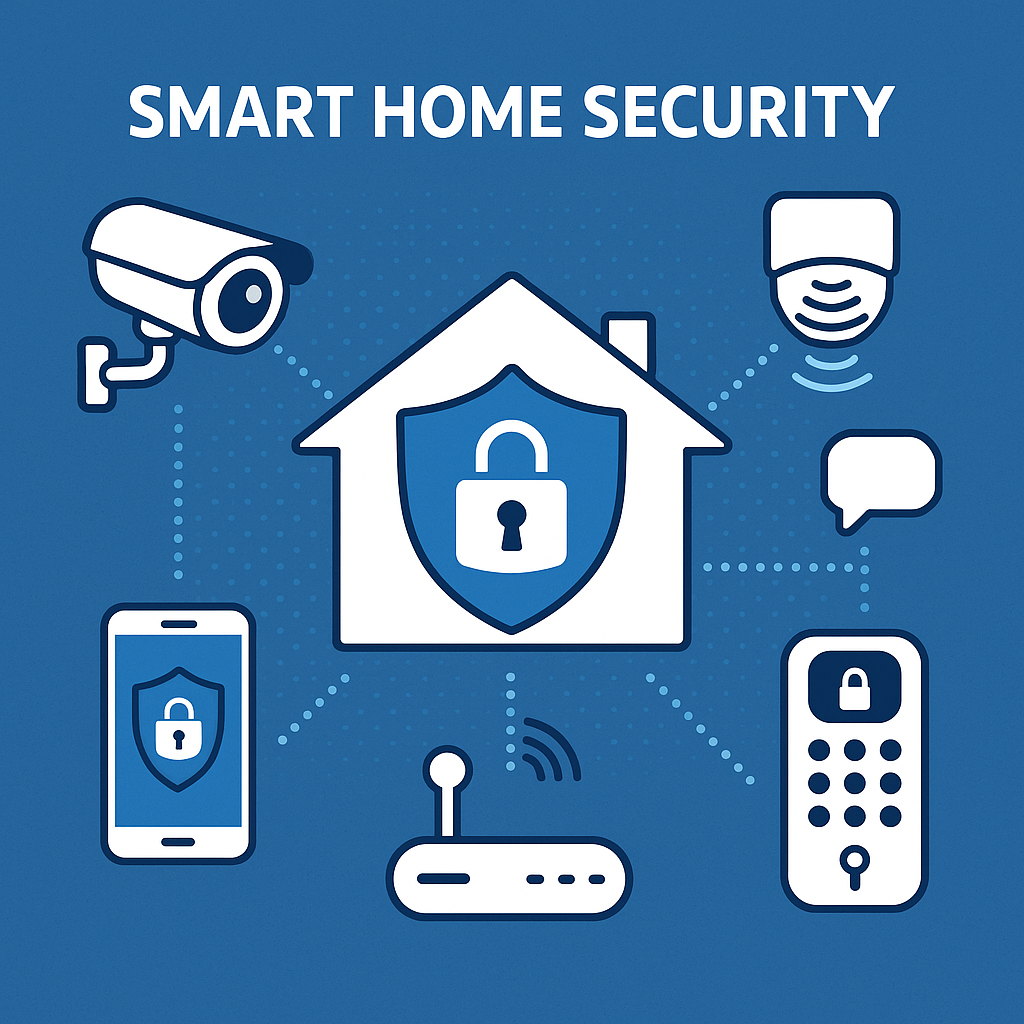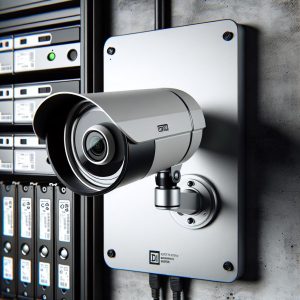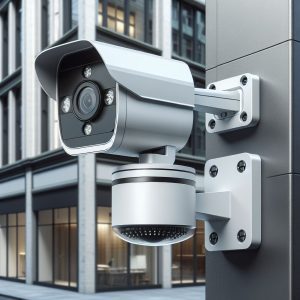Introduction
In the era of smart technology, home security has undergone a radical transformation. Traditional CCTV systems, once limited to passive recording and local monitoring, have evolved into interconnected, intelligent networks that work in harmony with the broader Internet of Things (IoT) ecosystem.
By integrating CCTV cameras with IoT devices—such as smart locks, sensors, alarms, lighting, and voice assistants—homeowners can achieve comprehensive, real-time security solutions that are not only more effective, but also more convenient and customizable.
This article explores the concept of integrating CCTV with IoT devices in smart home security. We will cover the benefits, challenges, use cases, technologies involved, privacy considerations, and practical tips for homeowners seeking to enhance their security infrastructure.
1. The Evolution of Home Security
1.1. Traditional CCTV Systems
Historically, CCTV (Closed-Circuit Television) systems involved analog cameras connected to local recording devices (like DVRs). Users could only view footage on-site or through limited remote connections.
Key characteristics:
- Passive monitoring
- Limited or no remote access
- Manual review of footage
- Single-purpose, non-integrated
1.2. The Rise of Smart Home Technology
The last decade has seen explosive growth in smart home devices. Examples include:
- Smart locks
- Motion detectors
- Contact sensors
- Video doorbells
- Smart lighting
- Voice assistants (e.g., Amazon Alexa, Google Assistant)
These devices can communicate via wireless protocols (Wi-Fi, Zigbee, Z-Wave, Bluetooth) and be controlled via smartphones or centralized hubs.
1.3. Integration and Convergence
Modern CCTV systems are now designed to integrate seamlessly with other IoT devices, creating a unified security ecosystem. Instead of isolated gadgets, homeowners can now orchestrate coordinated responses to potential security threats.
2. How CCTV and IoT Integration Works
2.1. Core Principles
At the heart of IoT integration lies communication and automation:
- Devices share data via local networks or the cloud
- Triggers and conditions can be defined
- Automation rules orchestrate device responses
For example:
- Motion detected by a camera ➜ Turns on smart lights ➜ Sends alert to phone ➜ Locks smart door
2.2. Common Integration Methods
- Cloud Platforms: Many manufacturers offer cloud-based dashboards (e.g., Ring, Arlo, Google Nest) for unified control.
- Smart Hubs: Hubs like SmartThings or Home Assistant enable cross-brand integration.
- IFTTT (If This Then That): Lets users create automation recipes across devices and brands.
3. Benefits of CCTV–IoT Integration
3.1. Proactive Security
Traditional CCTV is reactive (review footage after a break-in). Integration allows proactive measures:
- Instant mobile alerts on detection
- Automated sirens or lighting to deter intruders
- Live audio challenges
3.2. Remote Monitoring and Control
- View cameras from anywhere
- Arm/disarm systems remotely
- Control locks, alarms, and lighting
3.3. Enhanced Situational Awareness
Combining data from cameras and sensors creates a richer security picture:
- Motion sensors confirm human movement
- Door/window sensors detect forced entry
- Cameras provide visual verification
3.4. Automation and Convenience
Examples:
- Camera stops recording when homeowner arrives
- Lights turn on automatically when motion is detected at night
- Smart locks automatically secure doors when system is armed
3.5. Cost Savings
- No need for multiple proprietary systems
- DIY installation reduces costs
- Lower insurance premiums (in some regions)
4. Common Use Cases
4.1. Perimeter Security
- Cameras integrated with motion sensors
- Automated lighting on detection
- Alerts sent to homeowner’s phone
4.2. Entryway Protection
- Video doorbells with two-way audio
- Smart locks controlled remotely
- Contact sensors on doors and windows
4.3. Indoor Monitoring
- Cameras track movement
- Alerts when unexpected movement occurs during “away” mode
- Integration with smart alarms
4.4. Emergency Automation
- Fire/smoke detectors triggering cameras to record
- Alerts sent to emergency contacts
- Unlock doors automatically for fire department
5. Technologies Enabling Integration
5.1. Wireless Protocols
- Wi-Fi: Most common for cameras and hubs
- Zigbee and Z-Wave: Popular for low-power sensors and locks
- Bluetooth: Short-range control
5.2. Cloud Services
- Store and analyze video footage
- Enable remote access
- Integrate devices across brands
5.3. Artificial Intelligence
- Facial recognition
- Person detection vs. animals
- Behavioral analytics
5.4. Voice Control
- Alexa, Google Assistant, Siri integrations
- Voice arming/disarming
- Voice alerts (e.g., “Someone is at the front door”)
6. Challenges of Integration
6.1. Privacy Concern
- Potential for hacking or unauthorized access
- Data stored in the cloud may be vulnerable
- Homeowners must manage permissions carefully
6.2. Compatibility Issues
- Not all devices work together natively
- Manufacturer “walled gardens” limit choice
- May require third-party hubs or services
6.3. Complexity
- Advanced automation rules can be confusing
- Initial setup may require technical know-how
6.4. Reliability
- Dependent on internet connectivity
- Power outages may disable systems
- Cloud outages can interrupt service
7. Privacy and Ethical Considerations
As cameras become smarter and more integrated:
- Homeowners should respect guests’ and neighbors’ privacy
- Avoid intrusive surveillance in shared living spaces
- Review manufacturer privacy policies carefully
- Enable encryption and two-factor authentication
Best practices:
- Regularly update firmware
- Use strong passwords
- Disable unnecessary cloud storage if not needed
8. Future Trends
8.1. Edge AI
- Cameras processing video locally
- Reduces cloud costs and latency
- Improves privacy
8.2. Interoperability Standards
- Matter protocol aims to improve cross-brand compatibility
8.3. Advanced Biometrics
- Facial recognition
- Voice authentication
8.4. Integration with Smart Cities
- Potential for neighborhood-wide security networks
- Shared alerts and footage (with permission)
9. Tips for Homeowners
9.1. Plan Your System
- Identify vulnerable areas
- Decide on indoor vs. outdoor coverage
- Choose devices compatible with your chosen platform
9.2. Balance Cost and Quality
- Cheaper devices may lack security features
- Consider subscription costs for cloud storage
9.3. Secure Your Network
- Strong Wi-Fi passwords
- Guest networks for IoT devices
- Regular firmware updates
9.4. Test Automations
- Ensure automations work as expected
- Avoid false positives (e.g., pet-triggered alerts)
9.5. Review Privacy Settings
- Control who can access video feeds
- Limit unnecessary cloud uploads
- Understand manufacturer data policies
10. Conclusion
The integration of CCTV with IoT devices has transformed home security from a passive, reactive system into an intelligent, proactive, and highly customizable ecosystem. By combining cameras, sensors, locks, lighting, and cloud services, homeowners can achieve unprecedented levels of awareness and control over their properties.
However, these benefits come with new challenges—particularly around privacy, compatibility, and complexity. Careful planning, secure practices, and thoughtful automation design can help homeowners unlock the full potential of smart home security.
As technology continues to evolve, we can expect even smarter, more seamless, and more privacy-respecting solutions, making homes safer and more connected than ever before.
Secure Your Home and Business with Garrison Alarms!
Experience unmatched safety with Garrison Alarms – your trusted partner in cutting-edge home and business security solutions. With over 35 years of experience, we offer expert installation, state-of-the-art technology, and personalized security strategies tailored to your unique needs.
Our Services Include:
- Home & Business Alarms: Maximize security with our advanced wired and wireless alarm systems.
- CCTV Systems: Protect your property with high-resolution, 4K HD, and color night vision cameras.
- Access Control: Secure your premises with keypad entry, biometric solutions, and more.
- Alarm Monitoring: 24/7 monitoring to ensure your safety and peace of mind.
Why Choose Garrison Alarms?
- Expert & Professional Service: Our licensed technicians provide top-notch installation and support.
- Customer Satisfaction: We prioritize your security and satisfaction with a focus on quality and reliability.
- Affordable Pricing: Get the best security solutions at competitive prices.
Get a FREE Quote Today! Visit Garrison Alarms or call us at 09 520 4875 to learn more and secure your property today!
Garrison Alarms – Your Safety, Our Priority





